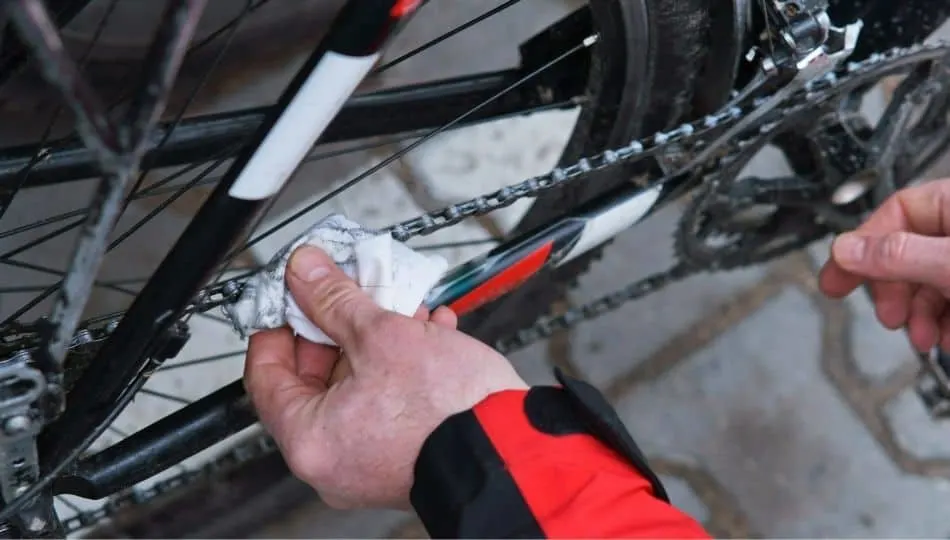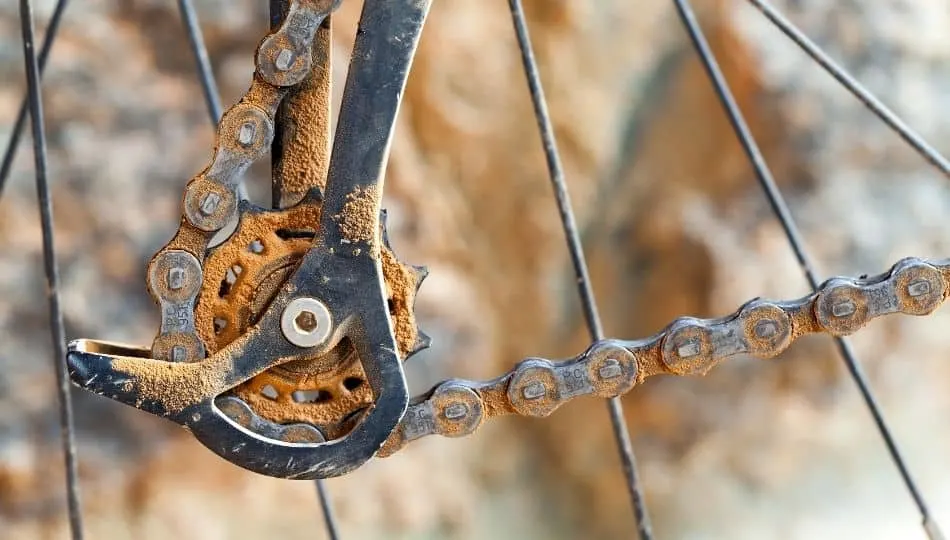
Keeping your bicycle in shape, especially your bicycle chain is one of the most important aspects of bike maintenance. After pumping tires, it’s the most frequently maintained part of a bike. Over the years, there’s been significant debate on whether or not you should use the popular household cleaner (WD-40) on your bike’s chain or not…well, here’s the answer.
WD-40 will suffice when it comes to acting as a lubricant for your bicycle chain when other materials are not available. However, lubricants that are specifically designed for bicycle-use will perform better than the well known household cleaner.
In the end, it comes down to personal preference? Are you a die-hard cyclist that needs to obtain the best possible options for your bicycle? Or are you just a casual cyclist that believes any option will do?
In addition to these questions, there are many more things you should consider when deciding whether or not WD-40 is your best option. Read further to understand the advantages of using the household cleaner, as well as some alternatives you can consider…
Why Should I Use WD-40 On My Bicycle Chain?
Although many cycling “experts” and bike mechanics are likely to warn you that WD-40 is not compatible with your bicycle chain and bicycle train, that is only true to a small extent.
There are many misconceptions surrounding WD-40 when it comes to its use during bicycle maintenance; some may say that it can damage your vehicle, while others may suggest that it does not fulfill the job of lubricating your bicycle. In order to clear up these misconceptions, these are a few reasons why WD-40 is fine for your bicycle.
- WD-40 does not damage your bicycle chain, nor your drive train
Many cyclists within the community have always claimed that the consistent use of WD-40 can damage your bicycle chain. I can tell you that this is completely untrue. While it is undeniable that products that have been designed with the bicycle chain in mind may serve as a better lubricant than the household cleaner, that is not to say that WD-40 cannot do the job. In short, WD-40 works, just not as well, but also at a much cheaper price.
- WD-40 is a sufficient lubricant for your bicycle chain
Yes, WD-40 can do the job, just not as well, but how well? In short, well enough for you to use it as a bicycle lubricant. If you are just a casual cyclist that only cycles for an hour or two on a daily basis, WD-40 does the job. If you are a cyclist that uses your bicycle for multiple hours on a daily basis… WD-40 still does the job.
However, if the latter case applies to you, it is strongly recommended that you reapply WD-40 to your bicycle chain every few rides because the household cleaner does not last too long. Many experts disapprove the use of WD-40 for this reason; it is made to be a light lubricant, meaning it may not last for extreme use and rapidly moving mechanical parts. However, this lack of ability can be offset by pro-activity.
Some Things to Keep in Mind When Using WD-40
As stated above, because WD-40 was not made to be a bicycle cleaner or lubricant, there are some important things you should remember before using WD-40 as your bicycle lubricant. There are some severe mistakes you could make with WD-40 that could really damage your bicycle. Here are some things to keep in mind.
- Do not ever use WD-40 on your bicycle’s rotor, hub bearings, rim, or brakes.
This will severely damage your bicycle’s parts and render them unusable and inoperable. When using WD-40 on your bicycle, keep the spray light. It is strongly recommended that you do not use WD-40 on full blast when applying it; apply the cleaner little-by-little and make sure that you are aiming accurately and precisely. You do not want to get the cleaner in any unwanted components.
- It is okay to use WD-40 on your derailleurs… sometimes.

While WD-40 is also applicable to your bicycle’s derailleurs in order to maintain cleanliness and to clean hard-to-reach areas in most cases, this may not be true for your bicycle. Before using WD-40 on your derailleurs, you must check if your bicycle’s rear derailleur pulleys have sealed bearings. If this is the case, WD-40 can damage your bicycle.
- Make extra preparations when riding in the rain.
As stated above, WD-40 is a light lubricant made to be applied on creaky door hinges or squeaky office chairs, rather than mechanical parts that can be vulnerable to heavy weather conditions. What does this mean for your bicycle? WD-40 will not last long in the rain.
If you are planning to cycle during heavy rain or snow, it is a good idea to carry an extra small bottle of bicycle oil for your bicycle chain. In the cases of heavy weather conditions, you may need to use this bicycle oil to re-lubricate your bicycle chain, as WD-40 tends to easily wash off in extremely damp or wet circumstances.
WD-40’s… Bicycle Oil?
In the case that you are not satisfied with WD-40’s performance on your bicycle’s chain or components, but you also do not want to spend a fortune on a high-class bicycle lubricant, there is an alternative. WD-40 actually offers a lubricant that performs just as well as other bicycle lubricants.
Bicycle experts usually approve of this product, as it provides significant long-lasting lubricant to your bicycle chain and it sufficiently protects your bicycle chain from outdoor wear. The 3-IN-ONE multipurpose oil was actually originally made for use on bicycle chains in 1894.
However, there are always two sides to the story. Some cyclists actually dislike the use of 3-IN-ONE on their bicycle components, stating that it provides insufficient friction performance for your bicycle. However, this is completely untrue.
After significant use, 3-IN-ONE is actually quite efficient when it comes to power efficiency and cycling, not to mention even in long-distance circumstances. Some have even gone as far as to say that 3-IN-ONE actually outperforms some bicycle lubricants on the market.
Final Thoughts
Although you will never see an expert or bicycle mechanic use — or even suggest that you use — WD-40 on your bicycle chain, I can confidently tell you that the household cleaner is completely safe for your bicycle’s components. Although it does undeniably have its downsides in that it does not perform well in heavy weather conditions, nor last for an extended period of time, it still does its job. In the end, it completely comes down to preference and whether or not you are able to settle for the product. The most important thing, ultimately, is to take care of your bicycle
